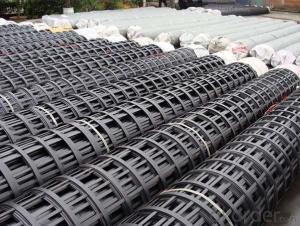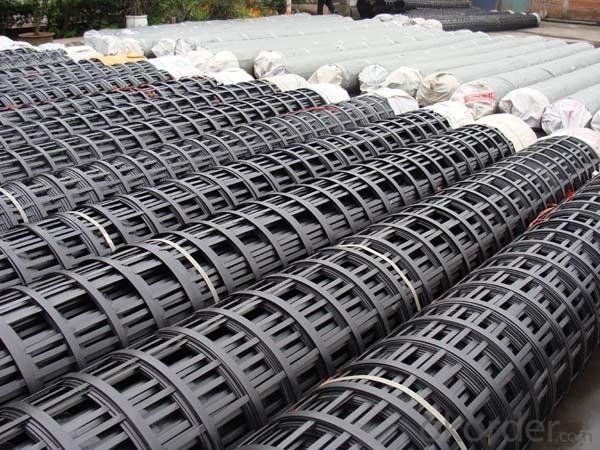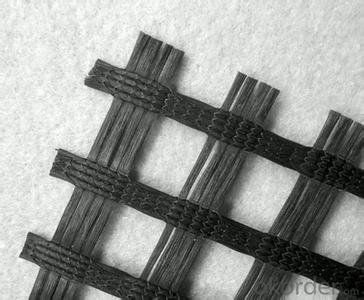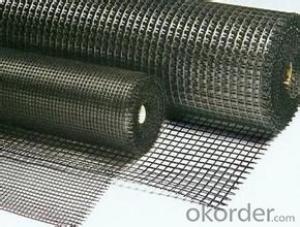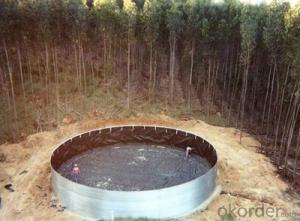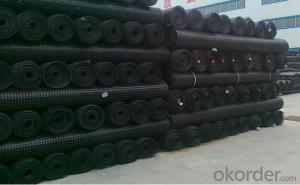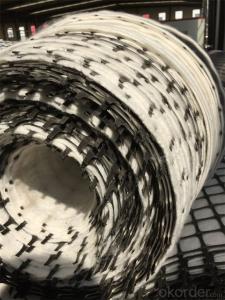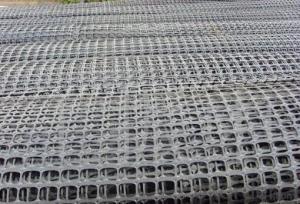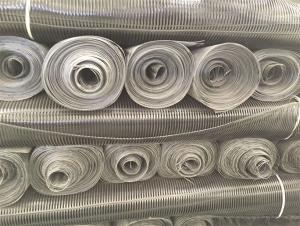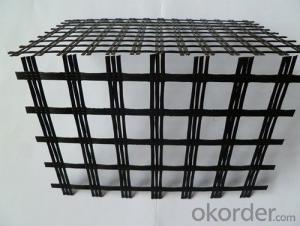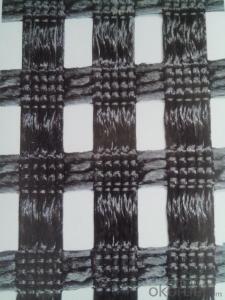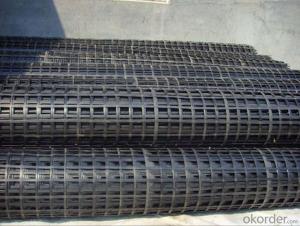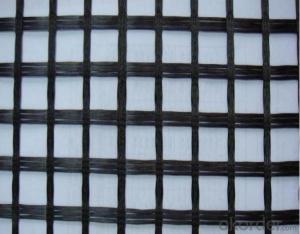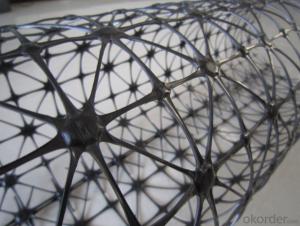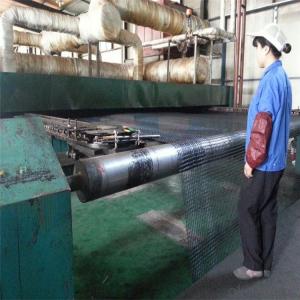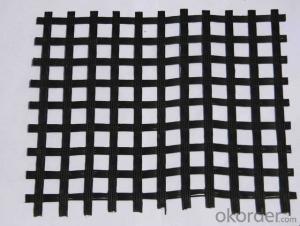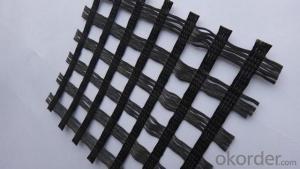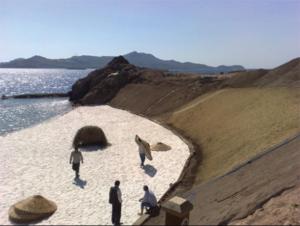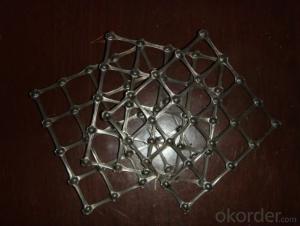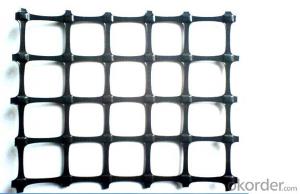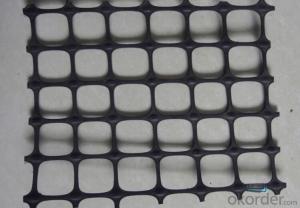High Strength Polyester Geogrids with PVC Coated Polyester/PP/Fiberglass
- Loading Port:
- China main port
- Payment Terms:
- TT OR LC
- Min Order Qty:
- 5000 m²
- Supply Capability:
- 1000000 m²/month
OKorder Service Pledge
OKorder Financial Service
You Might Also Like
Introduction of Fiberglass Geogrid:
Fiberglass geogrid is based on fiberglass woven cloth coated with modified bitumen or PVC, it was developed to address the problem of pavement cracking on highways, roads and runways, driven by a need to reduce cost for infrastructure maintenance and repair.
Performance of Fiberglass Geogrid:
--- High strength, high modulus and low temperatures resistance.
Applications of Fiberglass Geogrid:
--- Reinforcement for road pavement
--- Reinforcement for railway basement
--- Reinforcement for Tunnel
--- Reinforcement for Slope
--- Reinforcement for embankment.
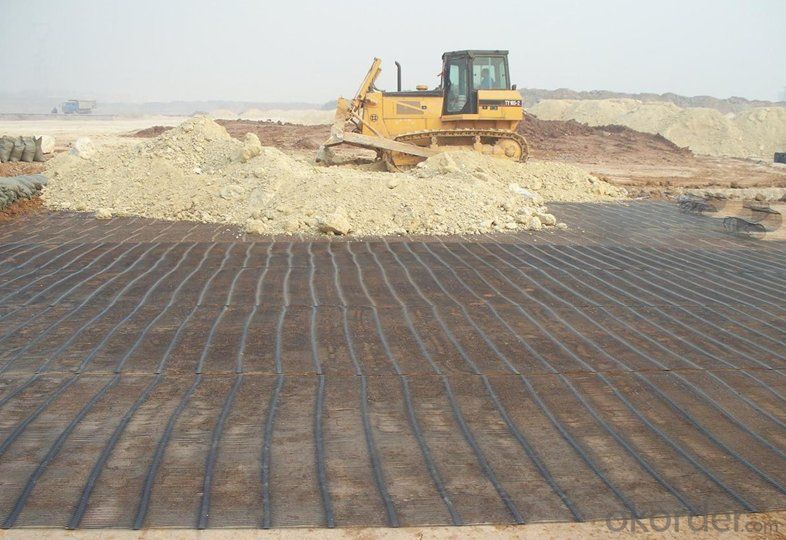
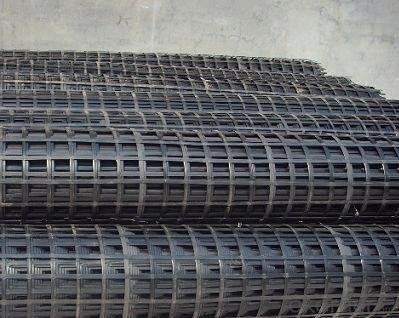
Features:
1.Intensity of vertically and horizontally from 20 KN/M to 150 KN/M
2.Low breaking elongation, not bigger than 3%
3.Suitable for each kind of soil environment
4.For treatment on surface, the rib suppresses the rough pattern, strengthens the grill surface the rough degree, enhances the GSZ steel plastic complex geogrid in the soil body friction factor.
5.It has more superior breadth, up to 2- 6 m, reducing construction joining, enhances the work efficiency.
6.High intensity, low creep and distorting
7.Resistant to erosion, longer life.
8.Easy and convenient to install, short period and low cost- saving. It can save project cost by 10%- 50%.
FAQ:
Q: Can you accept small trial order?
A: Yes, we accept small trial orders at reasonable charge.
Q:May I get one sample for checking out the quality? How much?
A: Yes, we supply sample free of charge, and the freight will be on buyer’s account, which is refundable when order confirmed.
Q: What is your MOQ?
A: Normally, 1000 m2 per order.
Q: What is your delivery time? Can we have it sooner?
A: 2 days for sample, 3-5 days against 1x40HQ
Q: What is your payment terms?
A: T/T, Paypal (3% surcharge), Western Union or 30% deposit 70% L/C.
- Q: Are geogrids suitable for use in railway trackbed stabilization?
- Yes, geogrids are suitable for use in railway trackbed stabilization. Geogrids provide reinforcement and stabilization to the trackbed by distributing loads, reducing settlement, and improving overall performance and longevity of the railway tracks.
- Q: Can geogrids be used in soil reinforcement for oil and gas pipeline projects?
- Yes, geogrids can be used in soil reinforcement for oil and gas pipeline projects. Geogrids are commonly used to improve the stability and load-bearing capacity of soil, making them suitable for reinforcing the soil around pipelines. They help to prevent soil erosion, increase the overall strength of the soil, and provide support to the pipelines, ensuring their safe operation.
- Q: Can geogrids be used in underground tunnels?
- Yes, geogrids can be used in underground tunnels. Geogrids are commonly used in tunnel construction to reinforce the surrounding soil and provide stability. They help distribute loads and prevent soil movement, enhancing the overall structural integrity of the tunnel.
- Q: What are the specifications of the geogrid for road use?
- Warp knitted grating
- Q: What are the factors that affect the installation and survivability of geogrids in cold climates?
- The factors that affect the installation and survivability of geogrids in cold climates include the ground temperature, frost heave, freeze-thaw cycles, and the type of soil. Cold temperatures can make the installation process challenging as the ground may become frozen, requiring additional measures to thaw the soil for proper installation. Frost heave, which occurs when water in the soil freezes and expands, can impact the stability and effectiveness of geogrids. Freeze-thaw cycles can also cause damage to the geogrids over time. Additionally, the type of soil, particularly its moisture content and drainage characteristics, can influence the performance and durability of geogrids in cold climates.
- Q: How do geogrids enhance the performance of geosynthetic clay liner drainage systems?
- Geogrids enhance the performance of geosynthetic clay liner drainage systems by providing additional reinforcement and stability to the clay liner. They help distribute the load more evenly, reducing the potential for settlement or deformation. Additionally, geogrids can increase the overall strength and resistance to shear forces, improving the overall performance and lifespan of the drainage system.
- Q: Is the test items within the inspection listAcceptance specification
- Overlapping width of Geogrid
- Q: How do geogrids improve the stability of embankments and slopes?
- Geogrids improve the stability of embankments and slopes by providing reinforcement and increasing the load-bearing capacity of the soil. They act as a barrier to prevent soil erosion and sliding, enhancing the overall stability and longevity of the structures. The geogrids distribute the applied forces more evenly, reducing the potential for settlement and deformation. Additionally, they improve drainage and allow for the construction of steeper slopes, minimizing the risk of failure and improving the overall safety of the embankment or slope.
- Q: How is a geogrid different from other geosynthetics?
- A geogrid is a type of geosynthetic that is specifically designed to provide reinforcement and stabilization to soil and other materials. Unlike other geosynthetics such as geotextiles or geomembranes, which primarily function as filters or barriers, a geogrid is characterized by its grid-like structure that offers high tensile strength and interlocking capabilities. This unique design allows geogrids to distribute loads more efficiently, enhance soil stability, and prevent the lateral spreading of materials.
- Q: How do geogrids enhance the performance of flexible retaining structures?
- Geogrids enhance the performance of flexible retaining structures by providing reinforcement and stability to the soil. They distribute the loads more evenly, reducing the stress on the structure and increasing its overall strength. Geogrids also prevent soil erosion and improve drainage, ensuring the long-term integrity and durability of the retaining structure.
Send your message to us
High Strength Polyester Geogrids with PVC Coated Polyester/PP/Fiberglass
- Loading Port:
- China main port
- Payment Terms:
- TT OR LC
- Min Order Qty:
- 5000 m²
- Supply Capability:
- 1000000 m²/month
OKorder Service Pledge
OKorder Financial Service
Similar products
Hot products
Hot Searches
Related keywords
